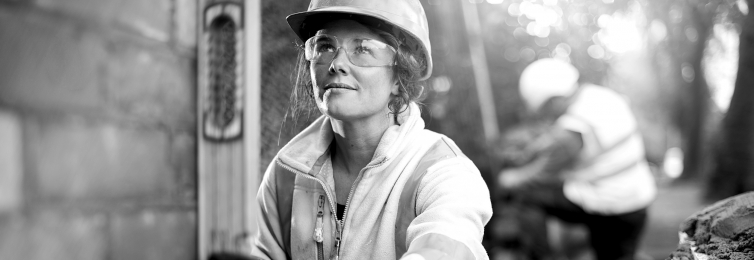Implementing proactive accountability as part of your company’s safety culture means working together to find solutions and share responsibility. It requires a commitment throughout the company. Each member of your team must do their part in pursuit of the company’s common goal. A sustainable and progressing culture of safety will not succeed until all levels of the organization adopt proactive accountability.
Move toward a safety culture that includes proactive accountability.
One of the first steps in moving toward a safety culture that includes proactive accountability is recognizing behaviors that negatively impact your employees and business.
Here are some behaviors to consider:
- Blaming: Accusing team members or subcontractors of mistakes.
- Ignoring: Choosing to ignore a bad attitude if an employee is good at their job.
- Denying: Claiming “It’s not my job! That wasn’t me.”
- Deferring: Passing responsibility by saying “They told me to do it.”
- CMA (Covering My Assets): Over-documenting processes to ensure you can’t share in the blame.
If any of these common behaviors sound familiar, then your team is not currently implementing proactive accountability. These behaviors should be corrected and replaced with more positive reactions like taking ownership and taking responsibility for situations.
Embrace challenges.
It is a good idea to remove the word “problem” from your company vocabulary and refer to any issues as “challenges.” We don’t have problems; we have challenges that provide us an opportunity to learn and grow. Proactive accountability starts with discovering your part in creating or responding to the challenge and changing your mindset to become a part of the solution.
What are YOU doing about your safety culture? Have you improved your hiring procedures to be the best they possibly can? Do you have a good return-to-work program? Do you make all of your employees feel valued and respected? Do you provide the best possible working conditions, tools, equipment, and training? Have you provided leadership training to your supervisors to give them communication and conflict resolution skills, and teach them to be a positive influence on their employees?
If not, then you are creating conditions that allow a weak safety culture to fester.
Accountability: admit, accept, act.
As the leader of your company, you can do a lot to change your safety culture. The first step is to admit how often you have not held yourself accountable. This can be difficult, but once you come to this realization, you will become a positive influence on your workforce.
Next, you must accept your role in the challenges facing your organization. A good leader acknowledges their role not only when things are going well but also when things are not going as planned.
Then, you can act by seeking out opportunities where you can improve, and your actions will demonstrate proactive accountability to your employees.
Focus on solutions.
If we focus on problems, all we will find will be problems. When we focus on solutions, we will find ways to overcome our challenges.
One good approach to improving your safety culture is to hold post-job briefings. Many companies already hold pre-job safety briefings. This is great, but we should also hold post-job briefings to identify challenges that employees experienced on your job-site and, at the same time, come up with solutions to deal with or prevent these challenges. This type of behavior will encourage proactive accountability to expand.
Recognize initiative.
Praise your employees publicly for decisions that improve your safety culture. If an employee shuts down a job-site or stops work because of a perceived safety issue, that employee should be recognized. Even if work did not have to stop, it is still necessary to encourage this practice. It is very intimidating for an employee to speak up when everyone else just wants to get the job done. Promoting this behavior will make it easier for others to be proactively accountable the next time something isn’t quite right.
Define what it means to do a good job.
Too many times, as a risk manager, I see companies writing up an employee just because someone needs to be held accountable. Instead, the company should focus on where the process breakdown occurred. What is wrong with the process that is driving this type of behavior?
Many times, an employee had the best intentions of getting the job done right but had only a short amount of time. Landmines and roadblocks are built into all of our processes that keep employees from doing the right thing at the right time. I encourage every organization to start reviewing their processes to determine whether the ways they are doing things are contributing to failures. Often, you will find that the employee was just trying to “get the job done.”
Companies must start telling their employees that “doing a good job around here means stopping when unsure or unsafe.” As a leader, doing a good job means uncovering the issues and making your workplace safer for everyone. Doing a good job is being proactively accountable.
More information on these concepts can be found in the book 6-Hour Safety Culture by Tim Autrey.
Content reviewed 8-2022.




 Find an
Find an